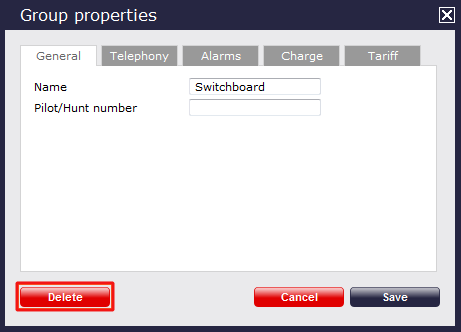User groups
What is a User group?
User groups are containers of users and they often mimic the organisational structure of your company, allowing senior management to report on calls by department. Access to the Directory can be restricted to one specific user group, so that managers can report only on their own department. For information on how to apply these restrictions, refer to the Web users section.

The Discovered Users folder
When you first configure the system and your extensions start to populate the Directory, a default folder, called Discovered Users is created automatically in the system. Its function is to pick up and store the newly discovered extensions and if renamed or deleted, it will be recreated in the Directory, as soon as a new extension is being picked up.
When you have created your own user groups in the Directory, you can move extensions from the Discovered Users folder to the newly created ones. For information on how to move users from one group to another, check the Moving a user between two groups section.
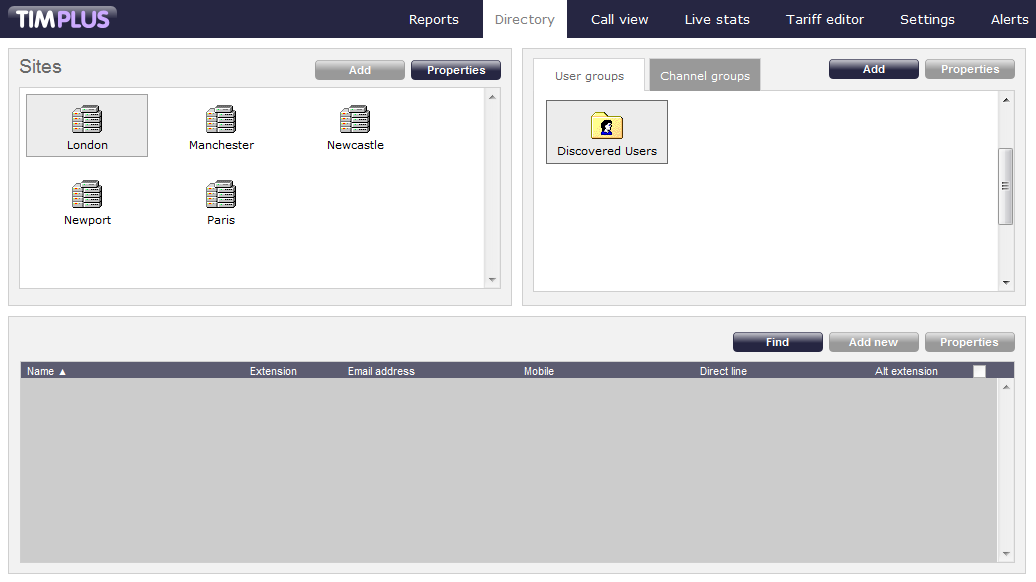
Adding a User group
To add a new user group, go to the , select the User groups tab from the Groups panel and click on the button.
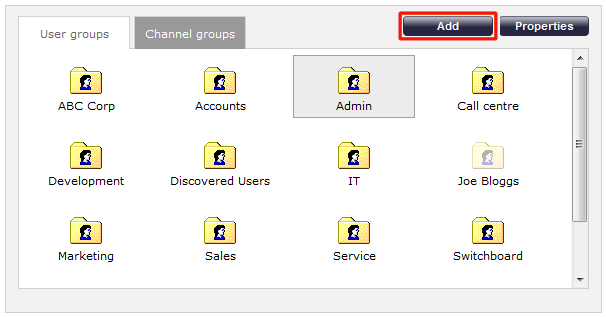
A new window will appear, allowing you to add the name of the group and its pilot/hunt number, if applicable.

Click on the button to add the new group to the Directory.
If you are synchronising with a third party system, e.g. Cisco AXL, you will automatically pick up the user groups as they are configured in your phone system. |
Configuring a User Group
To configure the properties of a user group, highlight the group you are interested in and click on the button at the top-right corner of the panel:
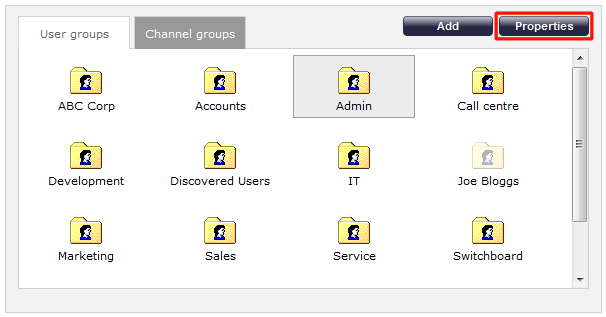
A new window will open, where you can configure the properties of your user group. Each tab in the Group properties window will be explained below:
General
In the General tab you can edit the name of your user group and the pilot number, if applicable. The name is usually related to the role the group plays in your internal organisational structure, e.g. Accounts, Sales, IT etc.

Telephony
The Telephony tab gives you the option to exclude the currently selected group from being logged or recorded in the system - assuming a call recording device is attached to TIM Plus.
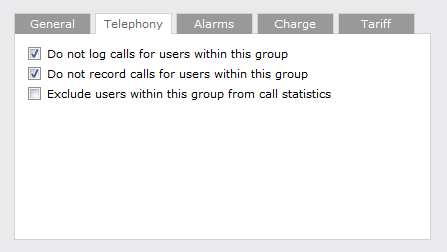
- Do not log - calls are not being logged and the call recordings - if applicable - are not accessible. The associated audio file is not being deleted, but there is no call log to be matched against.
- Do not record calls - calls are not being recorded;
- Exclude users from call statistics - calls are being logged, but not included in any stats points objects, therefore, they will not show on display boards.
Any users within a group set to Do not log will not count towards your user license. |
Alarms
TIM Plus can send e-mail alerts when calls whose properties match certain criteria have happened, such as calls above a particular duration, calls to specific phone numbers, or when user-defined cost thresholds are exceeded.
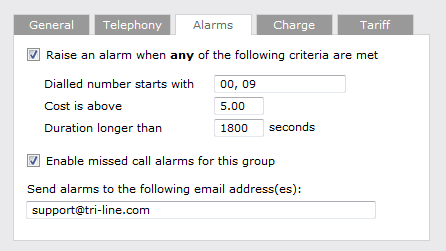
Dialled number alarm
An alarm can be activated when a full or partial number is dialled by any user within the selected group. To add a series of full or partial numbers, separate each one with a comma, as shown above. An example might be 00, 020, 020726526, 02072652600.
Cost alarm
An alarm can be activated when a call made by any user within the selected group exceeds a specific cost.
Duration alarm
An alarm can be activated when a call made by any user within the selected group exceeds a predetermined duration, measured in seconds.
Missed call alarm
E-mail notifications of missed calls can be activated for users in the selected group, by ticking the Enable missed call alarms for this site option.
Delivering the alarm notification
To receive an e-mail notification from TIM Plus about any of the aforementioned alarms, enter the address of the e-mail recipient in the box provided; to send alerts to multiple e-mail addresses, separate each one with a semicolon.
Charge
This Charge allows you to add a percentage markup to all calls in the selected group. To apply the charge, enter the percentage by which you would like to mark up calls, as shown below:
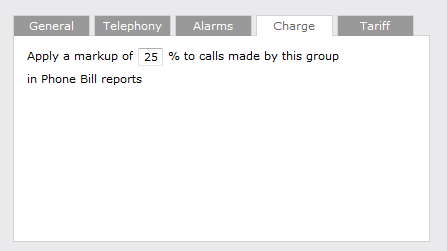
Tariff
The Tariff tab allows you to select the default tariff table to use when costing calls made by users from this group.

By default, TIM Plus is supplied with a standard tariff table for the country of installation, which automatically includes details of national, international and mobile/cellphone dial codes. Bespoke tariffs can also be provided on request. |
Renaming a User group
To rename a user group, locate the entity in the Directory and click on the tab.

A new window will open, where you can rename the group. Click to apply the changes.
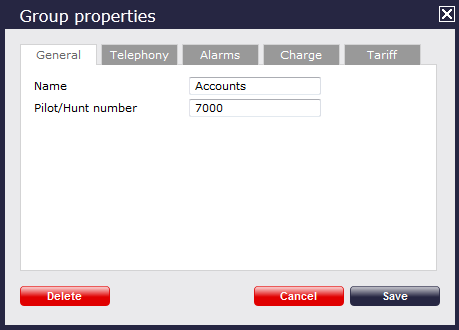
Deleting a User group
When you are deleting a user group, you are deleting all the information contained within the group, including all users and the calls associated with those users! |
To delete a user group from the Directory, select the group you want to remove and click on the button. In the new window that opens, you have the option to delete the selected group. You will be asked to confirm the deletion, in order to prevent groups being deleted accidentally.
